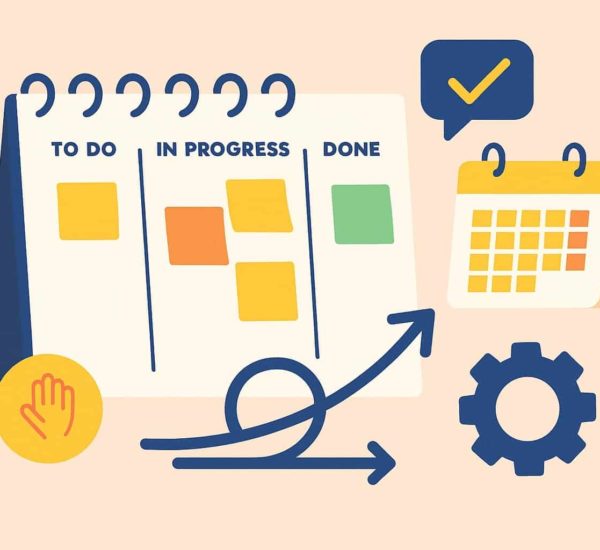Work-life balance has been a buzzword for well over a decade. Boomers and other older generations were used to a zero-sum game where life lost out when they worked and vice-versa.
But with multi-generational workforces becoming the norm, employers are realizing that the younger generation is looking at work and life differently now. Millennials and Gen Z are looking for ways to blend work with life rather than creating rigid schedules for work and leisure.
What can companies do to address this change in the nature of work-life balance? Let’s find out together.
What is Work-Life Balance?
The work-life balance definition simply is the optimal way employees are able to segregate their work life from their regular life. This creates a binary situation where work-life and “life-life” are competing with one another.
Over the years, 9 to 5 work timings, FMLA leaves and sabbaticals and are all some initiatives taken by HR for helping employees achieve better work-life balance.
What is Work-Life Integration?
As opposed to work-life balance, work-life integration can be defined as a way to bring together work, family, self-care and mental health. There are no rigidly designated work and personal time periods.
An example of work-life integration is when a salaried employee chooses to work from nine to noon, workout for an hour, have lunch and then work from two to six. They may also reply to emails and do a meeting or two for an hour at night.
What’s the Difference between Work-Life Balance and Work-Life Integration?
Companies are always confused about work-life Integration vs balance.
The key difference is how the adopter looks at work. Is it a part of their life that they want to weave into their day? Or is it something that they do for a block of time and then live their life?
For those who are given the flexibility of creating their own schedules, work-life integration is certainly the way to go.
It is also the perfect way for care-givers to rejoin the workforce.
But obviously, it can be a slippery slope for some. Employees may find themselves adrift if they’re used to strict compartmentalization. They may not be able to create a day where they’re able to fit in work and everything else going on. For people like this, it is almost mandatory to create some sort of a schedule to ensure that they’re doing everything they need to during the day.
Potential Benefits of Work-Life Integration
Attract Top Young Talent
With Millenials and Gen Z looking to race through the corporate ladder, work-life integration is something they look at as a necessity. They want it all, and they want it now.
Increase Productivity
Employees who aren’t caught up in filling “hour quotas” are more focused on productivity. They’re busy doing smart work, instead of slogging away all day.
Reduce Burnout
Employees who are caught up with work, children and parents can often find themselves burning both ends of the candle. They race towards burnout with no break in sight. With increased flexibility, they’re able to work through all their obligations without feeling the added pressure of completing hours.
Develop a Culture of Accountability
Let’s face it. None of us are kids anymore and the threat of retribution can only be so effective. Employees with work-life integration feel that they’re given more responsibility and trust which they need to be accountable for. By giving them flexible working hours each of them feels more responsible towards their work and timelines. This improves employee engagement and develops a culture of responsibility across the company.
Meeting the changing needs and expectations of your workforce can be a challenge. HR leaders embrace the idea that work-life integration can be positioned to attract top talent, increase engagement and develop an organizational culture that fosters long-term success.
Better Attitudes
We’ve all been jobs where we feel stifled and our opinions disregarded. With work-life integration, we give employees the opportunity to steer their own ship and that reflects in their demeanour. An employee who can take a few hours off to take care of their ailing grandmother will always be in a better mood that one who’s forced to work through it all.

The Nine Ways HR Leaders Can Pave The Way for Work-Life Integration
#1: Allow Employees to Define What Work-Life Integration Means for Them
Most employees are used to one of two things- either having fixed work hours after which they do no work or work leaching in relentlessly through the day.
What we’re trying to do with work-life integration is allow life to leach in through the workday too. To combine them in such a way that some work engagement after traditional work hours doesn’t feel like an intrusion.
All employees need to have a sit down with HR and understand what work-life integration means for them and how the company can help them achieve it. Some situations could be:
- Does the employee need more time for their hobbies?
- Do they seem to be working 24 hour days?
- Are they finding it hard to care for a family member?
- Is their social life all but dead because of work?
- Are they inching closer to burnout because they just have no time for working on themselves either through self-care or upskilling?
- Is their health failing due to their sedentary lifestyle?
By answering these questions companies can offer more flexible work hours, remote work or even just split shifts. It is up to them to decide if these can be customized to employees or be company-wide policies.
#2: Provide the Right Technology for Work-Life Integration
A few years ago it would be impossible for some companies to even think of working remotely but now in the pst-pandemic world, it has become the norm.
With communication tools like Slack, Zoom and Google Meet and project management tools like Asana, Jira and even AttendanceBot there are no excuses.
There is an app for everything from time tracking right up to employee engagement. It is the job of a proactive HR department to provide these tools to employees to make work-life integration easier.
#3: Give Employees Guidelines and Training
Work-life integration may sound really easy but that isn’t always the case. Although the idea of running to do errands while ensuring that you’re still available for work sounds great, it can a toll on some employees.
HR needs to step in and help employee chart their work-life integration journey. The first step was covered in one of the previous points where we spoke about employees understanding what they need more time for. But there are also other areas where training and guidelines can be provided to make work-life integration more seamless for both employees and the company. For example:
- Give training to managers to help them understand how to measure productivity
- Provide mental health resources for employees who may be suffering from being always “on call”
- Train employees to recognize signs of burnout so that managers can step in timely
- Provide communication protocols for employees so that feeling connected doesn’t feel like an extra technology that they need to handle
- Make employees understand that they need to be present in whatever moment they’re in. If they’re taking care of their elderly parents they shouldn’t have one eye constantly on their phone. The same works the other way around. When they are working, they should aim to give it their undivided attention to maximize productivity.
Although work-life integration vs balance may seem like complex ideas they essentially are two roads to the same destination. The destination is one where both the employee and company can get the best out of their day.
#4: Understand The Complexities of Work-Life Integration
We aren’t going to lie, productivity during work-life integration may be a task for managers to track initially. Companies just can’t have work-life integration with where they expect the employee to always be available and give them no time to do any personal activities. That is a sure shot way to employee burnout and high attrition.
There can be ways to standardize this:
- Shift Employees: For hourly employees working shifts you can always create split shifts to provide ways to take longer breaks during the day.
- Employees with Planned Complexities: Some employees may be parents or even students. If they have recurring events that they need to do during the day, you can incorporate them into their workday. These can be organized by HR into categories that new. employees can opt for, for easy management. For example, having one for part-time workers with multiple jobs, another for college students or even primary caregivers.
- Employees with Unique Complexities: This is much harder to manage and companies need to understand if they have the bandwidth to offer such flexibility. This where each employee has a sit down with HR and their manager where they explain what flexibility they require. Managers should check in frequently to see if their needs have changed.
Through all this, we need to give employees to take a break from constant connectivity. Vacation, days off and even the weekends should remain minimal to no-contact. Not doing so makes employees think that they’re being misused and never have any proper time off work at all.

#5: Retrain Managers to Eliminate an “Hours Put in” Mentality
Managers may often look at productivity in terms of hours put in. In the case of employees paid by the hour, work-life integration is impossible. But salaried employees who can be offered more flexibility must feel that their hard work is acknowledged irrespective of hours put in.
HR may need to find ways to retrain managers who may be set in their ways.
#6: Reward Healthy Work-Life Integrations
Wellness initiatives have really taken off during the pandemic. HR has come to terms with the fact that self-care and health are important factors for employee productivity. Employees who are unfit may need to take more time off and require more robust healthcare.
Employees who use work-life integration options to get healthier should be rewarded. The rewards may be things as simple as gift cards, gym memberships and personal training sessions but they’ll go a long way to incentivizing employees to do better.
You can also gamify this by having mini-competitions in the workplace. For example, the employees who walk more than 10 miles a week are given an additional flexible work hour during the week.
#7: Embrace Work from Anywhere
Although the pandemic has forced companies to embrace remote work, they still need employees to work from places close to the office. This may just be because of compliance issues that HR is not willing to deal with on such short notice. Or the fact that they think the office is eventually where they want employees to work from.
But a study by Harvard Business Review discovered that employees with work from anywhere policies were 4.4 per cent more productive than those who worked from the office. Additionally, there was a 4.4 per cent reduction in recruiting and hiring costs due to improved attrition rates.
By embracing work from anywhere, employees are able to relocate the less expensive areas, generally suburban areas, where their real income improves. They can also relocate to be closer to friends and family which can improve job satisfaction and morale.
If you have employees suffering from a case of wanderlust, they can travel the world and continue to work towards their career.
#8: Constantly Reinforce Company Support
The human mind is strange. Employees feel burned out if they aren’t able to have time to themselves but guilty when they do. Some may think that if they aren’t working long hours, they aren’t giving their 100%.
Companies need to reiterate their support for work-life integration and incentivize employees. They should stop looking at it as a luxury that they owe the company for. Instead, they should look at it as a tool for improved health, balance and productivity.

#9: All or Nothing
Every company must look at work-life integration as a gift and not a burden.
Older employees are used to a more traditional approach. One where they put in their everything for nine to ten hours and then go home to cool off for the next workday. Changing their mindset and bringing them on board is the key to the successful implementation of work-life integration.
If they constantly complain about having to work during their “rest hours”, they can make everyone’s lives difficult. Their frustration will begin to leach into the rest of the team and make everyone revert to old habits.
Do your very best to bring them into the fold and ensure that work-life integration is adopted across the company.
Use Work-Life Integration to Eliminate Employee Burnout
Employees find themselves pulled in a million different directions and as HRs it is our job to make their job easier. We need to train all of them to look at work and life differently to prevent burnout.
Work-life integration is just one way to do this.
Do you have any other ways to improve employee engagement and attrition in these turbulent times? Reach out to us @HarmonizeHQ and let us know.



